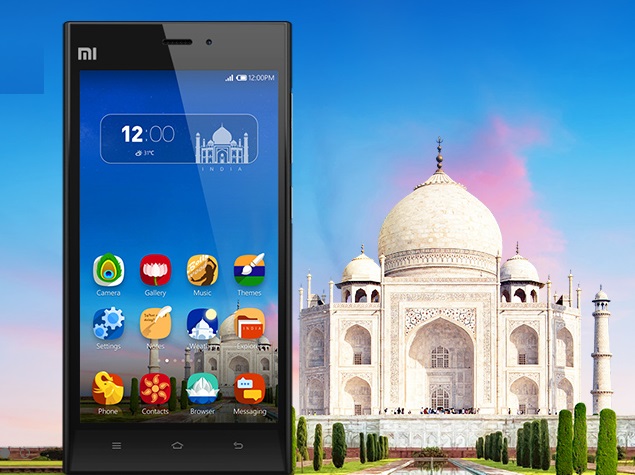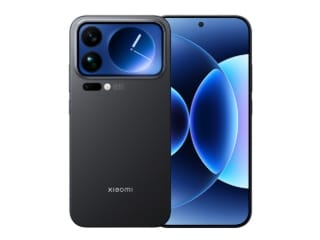- Home
- Mobiles
- Mobiles Opinion
- How Xiaomi Ruined My Life
How Xiaomi Ruined My Life

The Moto X (Gen. 2) is a great phone. Again with a top-of-the-line chip powering it, it's got a unique wooden back cover, with convenient features like Touchless controls, Active Display and useful gestures.
The LG G3 is a great phone. It's got a crisp Quad-HD display, with laser auto-focus for the rear camera, wireless charging and an IR port, among other truckloads of features.
So what's wrong? For one, all these phones cost above Rs. 30,000. Thanks to new smartphone entrants like Xiaomi, all these phones feel completely overpriced; and they are not even the most expensive phones on the shelf today. It is true that Xiaomi right now does not have a flagship phone on sale, so this argument today is irrelevant. But just look at their last year's high-end phone, the Xiaomi Mi 3.
After the company halted sales for this device here in India, there still isn't a worthy spec-for-spec replacement at the price point of Rs. 13,999. And once the Xiaomi Mi 4 lands in India by the ending of this year for an estimated Rs. 20,000 price tag, things are bound to get stirred up again. This is true for all the price segments that Xiaomi products fall under. In the under Rs. 10,000 segment, a few months ago the Moto E was reasonable, the Android One today is even better, but there's no beating the spec-to-price ratio of the Xiaomi Redmi 1S.
(Also see: 2014: The Year of the Great Smartphone Price Wars)
Years ago, a wave of Indian phone makers led by Micromax, Karbonn, Lava started kicking ass of big brands like LG, Samsung and Sony by producing products that sounded much better on paper, and costed a lot less. But in reality it was evident that many initial offerings didn't use quality components nor was their software customisation compelling, making the distinction between them and the big brands clear as night and day. And that is exactly the gap that Xiaomi, OnePlus, Gionee, Oppo and other "premium" Chinese phone makers are bridging.
It's come to a point where you really have to question, "why am I paying more for big brands?", beyond the logo etched on their body or the "peace of mind" they supposedly offer.
Premium design? Check! Although some of them don't have the most original design, but if you can make a phone that is built like flagship phones at less than half the cost, then you've got my vote.
Quality components? Check! Most of these phone companies use the same chipsets as the big brands. They also source their displays, internal memories, camera modules and other components from the same vendors as the same as the big brands.
Software differentiation? Check! Instead of just bloating the OS with gimmicky features, Xiaomi in particular has added quite a few useful features to its customised version of Android that will even make stock Android purists turn their heads.
After-sales support? Well, I've heard horror stories even about the big guys when it comes to customer service too. On the other hand, Xiaomi has flexible warranty policies where it will supposedly even repair phones that are rooted and have malfunctioned because of your 'wrongdoing'. (Editor: Though Xiaomi has promised a lot in the after-sales department, the real world performance in India remains to be seen.)
There are certain useful features that do set the biggies apart from the small fish - fingerprint scanners, water resistance, unique gestures, styluses, constant motion tracking, powerful speakers, wireless charging, big camera sensors etc. But while some of them may be useful to everybody, many things on the feature laundry list can be placed under the good-to-have column, rather than the must-have.
And finally, brand value - since these uber-Chinese companies have really ticked all the boxes that most users really want, the logic-driven mind will not see this product as a symbol of inferiority. Especially at a time when paying for brand value reaches new heights every year - the most expensive Samsung smartphone, the Galaxy Note 4 today costs Rs. 58,000, up by about Rs. 10,000 from last year, and Rs. 23,000 more than what the original Galaxy Note cost three years ago. Nobody likes to pay more for stuff, so Xiaomi's approach of selling devices almost at cost and their ideology of looking at hardware as a commodity will find many takers.
This is why Xiaomi has ruined my life. It has made it extremely difficult for me to buy or recommend any other brand today, and you require a strong reason why you wouldn't buy one of its phones instead.
Rohan Naravane heads the Content & Product at PriceBaba. He's usually found rambling mostly about tech on Twitter @r0han.
Disclaimer: The opinions expressed within this article are the personal opinions of the author. NDTV Gadgets is not responsible for the accuracy, completeness, suitability, or validity of any information on this article. All information is provided on an as-is basis. The information, facts or opinions appearing in the article do not reflect the views of NDTV Gadgets and NDTV Gadgets does not assume any responsibility or liability for the same.Catch the latest from the Consumer Electronics Show on Gadgets 360, at our CES 2026 hub.
Related Stories
- Samsung Galaxy Unpacked 2025
- ChatGPT
- Redmi Note 14 Pro+
- iPhone 16
- Apple Vision Pro
- Oneplus 12
- OnePlus Nord CE 3 Lite 5G
- iPhone 13
- Xiaomi 14 Pro
- Oppo Find N3
- Tecno Spark Go (2023)
- Realme V30
- Best Phones Under 25000
- Samsung Galaxy S24 Series
- Cryptocurrency
- iQoo 12
- Samsung Galaxy S24 Ultra
- Giottus
- Samsung Galaxy Z Flip 5
- Apple 'Scary Fast'
- Housefull 5
- GoPro Hero 12 Black Review
- Invincible Season 2
- JioGlass
- HD Ready TV
- Laptop Under 50000
- Smartwatch Under 10000
- Latest Mobile Phones
- Compare Phones
- Samsung Galaxy A07 5G
- Vivo Y500i
- OnePlus Turbo 6V
- OnePlus Turbo 6
- Itel Zeno 20 Max
- OPPO Reno 15 Pro Mini 5G
- Poco M8 Pro 5G
- Motorola Signature
- Lenovo Yoga Slim 7x (2025)
- Lenovo Yoga Slim 7a
- Realme Pad 3
- OPPO Pad Air 5
- NoiseFit Pro 6R
- Xiaomi Watch 5
- Acerpure Nitro Z Series 100-inch QLED TV
- Samsung 43 Inch LED Ultra HD (4K) Smart TV (UA43UE81AFULXL)
- Asus ROG Ally
- Nintendo Switch Lite
- Haier 1.6 Ton 5 Star Inverter Split AC (HSU19G-MZAID5BN-INV)
- Haier 1.6 Ton 5 Star Inverter Split AC (HSU19G-MZAIM5BN-INV)

















